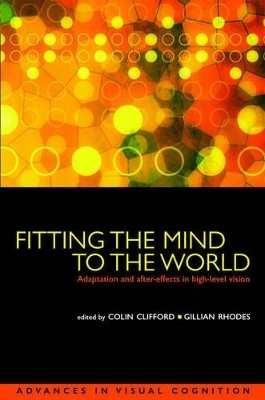
Fitting the Mind to the World
Oxford University Press (Verlag)
978-0-19-852969-9 (ISBN)
Adaptation phenomena provide striking examples of perceptual plasticity and offer valuable insight into the mechanisms of visual coding. The technique of psychophysical adaptation has aptly been termed the psychologist's microelectrode because of its usefulness in investigating the coding of sensory information in the human brain. Its broader relevance though is illustrated by the increasing use of adaptation to study more cognitive aspects of vision such as the mechanisms of face perception and the neural substrates of visual awareness.
This book brings together a collection of studies from international researchers, which demonstrate the brain's remarkable capacity to adapt its representation of the visual world in response to changes in its environment. A major theme throughout is that adaptation at all stages of visual processing serves a functional role in the efficient representation of the prevailing visual environment. Information about the visual world is coded in the rate at which neurons fire. However, neurons can only respond over a certain range of firing rates. Adaptation of the way in which neurons code visual information tends to make optimal use of this limited response range. Though these principles are well established at the level of light adaptation in the retina, it is only relatively recently that researchers have started to look for analogous behaviour at the higher levels of the visual system. This book is the first to bring together evidence that adaptation in high-level vision, as at the lower levels, serves to fit the mind to the world.
Fitting the mind to the world - introduction ; SECTION I: FOUNDATIONS ; 1. Physiological mechanisms of adaptation in the visual system ; 2. Functional ideas about adaptation applied to spatial and motion vision ; 3. Accommodating the past: a selective history of adaptation ; 4. The role of adaptation in colour constancy ; SECTION II: HIGH-LEVEL VISION ; 5. High-level pattern coding revealed by brief shape aftereffects ; 6. fMRI adaptation: a tool for studying visual representations in the primate brain ; 7. Adaptation to complex visual patterns in humans and monkeys ; 8. Adaptation and face perception: how aftereffects implicate norm-based coding of faces ; 9. Adaptation and the phenomenology of perception ; SECTION III: ATTENTION AND AWARENESS ; 10. Adaptation as a tool for probing the neural correlates of visual awareness: progress and precautions ; 11. Attentional modulation of motion adaptation ; 12. Adaptation and perceptual binding in sight and sound
| Erscheint lt. Verlag | 5.5.2005 |
|---|---|
| Reihe/Serie | Advances in Visual Cognition ; 2 |
| Zusatzinfo | numerous line drawings, halftones and colour plates |
| Verlagsort | Oxford |
| Sprache | englisch |
| Maße | 162 x 242 mm |
| Gewicht | 726 g |
| Themenwelt | Geisteswissenschaften ► Psychologie ► Allgemeine Psychologie |
| Geisteswissenschaften ► Psychologie ► Biopsychologie / Neurowissenschaften | |
| Geisteswissenschaften ► Psychologie ► Test in der Psychologie | |
| Naturwissenschaften ► Biologie ► Humanbiologie | |
| Naturwissenschaften ► Biologie ► Zoologie | |
| ISBN-10 | 0-19-852969-4 / 0198529694 |
| ISBN-13 | 978-0-19-852969-9 / 9780198529699 |
| Zustand | Neuware |
| Haben Sie eine Frage zum Produkt? |
aus dem Bereich


